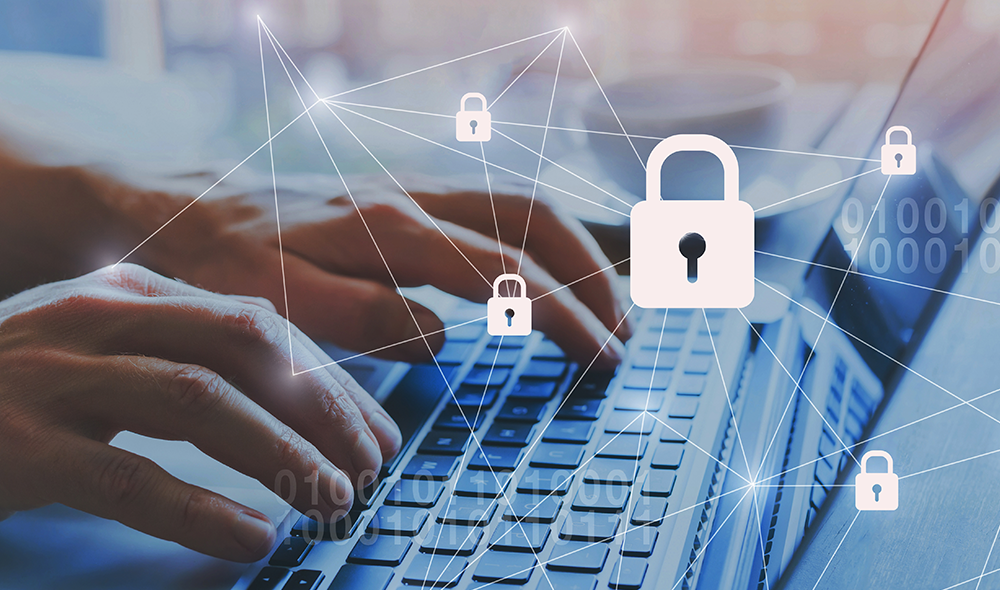Data Security vs System Security and How Do You Protect Both

Incorporating cybersecurity measures within your organization is no longer an option – it’s a must! Not only are Fortune 500 companies bolstering their security measures, but companies of all shapes and sizes are taking the same steps to protect their data to avoid high costs of a data breach and preserve their reputation.
There are two facets to cybersecurity: protecting networks and protecting data. Each has its unique challenges and requirements. Let’s take a closer look at data security vs system security and how to protect both.
Data security vs system security
Data security relates to the efforts your organization takes to ensure that its information is secure. In contrast, system security involves the safeguards and controls an organization takes to ensure its networks and resources are safe. Basically, data security protects the information, while system security protects what holds the information.
Data security 101
Data security fundamentals include ensuring that all the information you or your organization possesses isn’t accidentally modified or deleted, manipulated, stolen, sold, misused or deliberately accessed. To break it down further, the Federal Trade Commission’s Data Security guidance page has more information on breach reporting and data security.
Internal security teams and external cybersecurity firms should start by cataloguing whatever digital information is stored within the organization. Most will be obvious, like servers and laptop computers, but others are not so obvious, like a printer or digital photocopier. Once all the areas where the information resides have been pinpointed, it’s essential to take stock of how data enters and leaves the organization. Entry and exit points must be monitored to avoid significant vulnerabilities. The use of encryption will ensure that your organization’s data is safe and secure at all times. Keeping an inventory will help determine what data needs to be kept and what can be destroyed. If there’s no business or legal reason to hold on to information, the best approach is to have it erased securely.
The next and most important step in data security is to ensure that your physical assets can’t be taken. Locking down laptops and limiting access to other equipment and servers is key. All company computers and laptops should be password-protected and encrypted. Employees should be educated on cybersecurity basics and also told not to allow anyone onto the premises without official access to avoid anything being stolen in a covert way. Employees should also change their passwords regularly but not write them down. Privacy screens are also a good investment if employees work remotely as it adds an extra layer of security when inputting logins and passwords in public places.
System security 101
System security and data security go hand-in-hand. System security relates to the controls and safeguards an organization adopts to ensure its resources and networks are safe from interference, downtime or malicious intrusion. A good metaphor to describe the importance of system security is that if data security protects the information within books in a library, system security protects the library itself.
How to deal with common security attacks
- Backdoor attack: Programmers sometimes leave in code that allows computers to access the network easily, usually for debugging purposes. However, this can leave them open to attack. Malicious actors might exploit these weaknesses. It’s important to review the code for any new software added to the organization and ensure that they are not vulnerable to attack.
- A Denial of Service (DoS) attack is when the attacker makes a machine or network resource unavailable to its intended users by disrupting the services of a host connected to the internet. DoS attacks are the easiest to prevent. Designed to overwhelm a system by bombarding it with requests, DoS attacks disrupt a targeted server by overwhelming it with a flood of traffic. DoS attacks can be prevented by monitoring network traffic and filtering incoming traffic.
- Direct access attack: When access is given to your physical assets, it’s relatively easy for your most sensitive information to be accessed at the same time. Hackers can simply steal laptops, flash drives, and hard drives or break into an office to take or copy from a device they have pinpointed. The best defence against this type of attack is worker training, heightened security and information encryption.
- Ransomware attack: During a ransomware attack, a hacker can gain access to your network and encrypt all your data. To obtain the encryption key, you must pay them a ransom. Malware usually makes its way onto your network through a worm or virus, so educate your employees about the dangers of clicking on suspicious attachments or links.
Note: This blog article was written by a guest contributor for the purpose of offering a wider variety of content for our readers. The opinions expressed in this guest author article are solely those of the contributor and do not necessarily reflect those of GlobalSign.
*** This is a Security Bloggers Network syndicated blog from Blog Feed authored by Blog Feed. Read the original post at: https://www.globalsign.com/en/blog/data-security-vs-system-security




